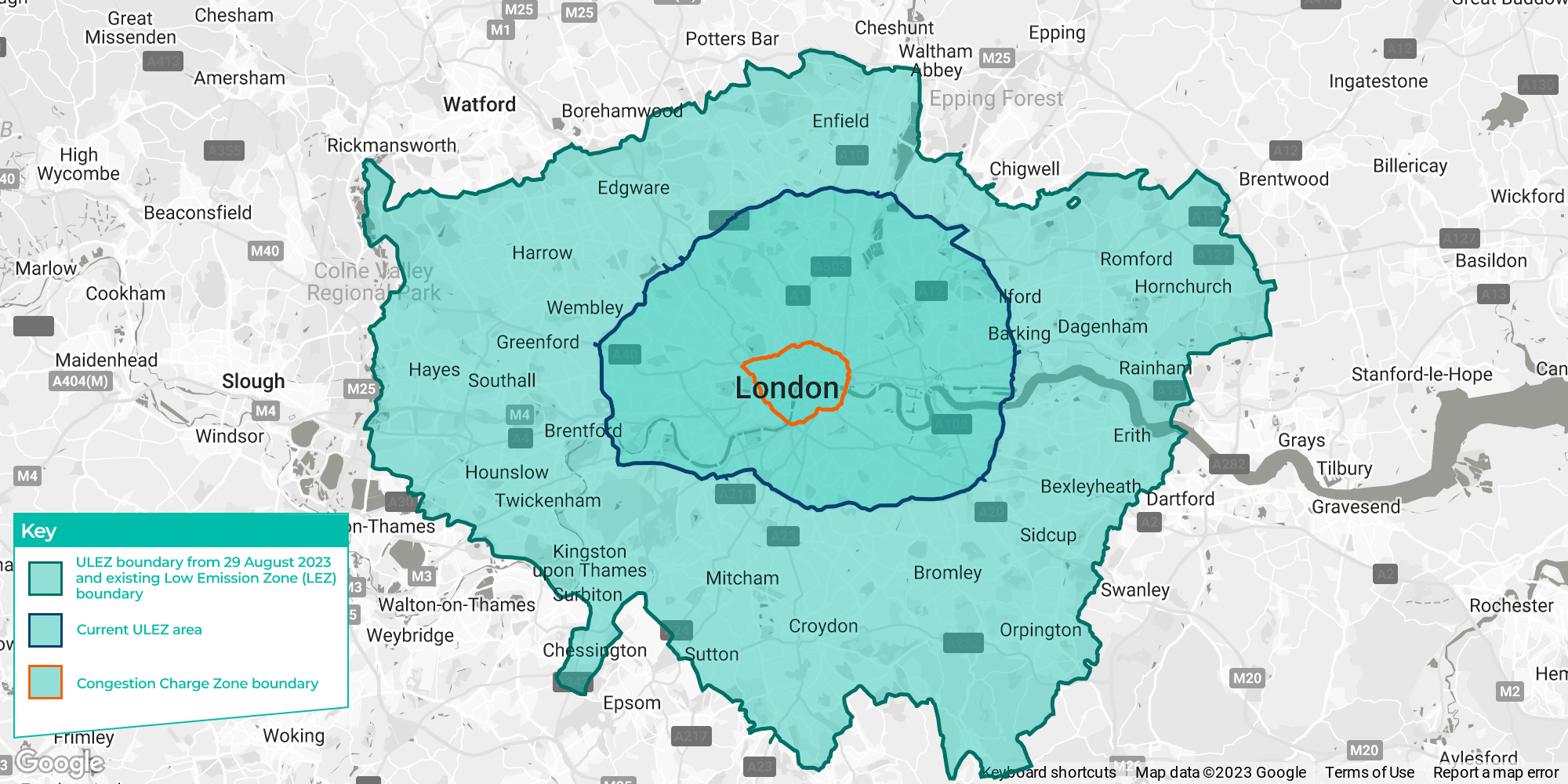
What are Clean Air Zones? (And Where are They?)
Find out what a clean air zone is, where they are in England, and how they work
A Clean Air Zone is designed to improve air quality in certain urban areas within the UK. These designated areas impose certain restrictions on vehicles that don’t meet a required emission standard. Drivers of these vehicles usually have to pay a certain charge to enter these zones.
What is a Clean Air Zone?
A clean air zone is where a city has taken measures designed to improve the air quality. One of these measures is charging highly polluting vehicles a charge to help address the pollution levels.
There are clean air zones where you do not have to pay a charge to drive through – measures such as traffic-flow management and retrofitting certain vehicles to reduce emissions.
The specific class of each CAZ is decided by the local authority, but are regulated by the Clean Air Zone framework, which was outlined by the UK government in February of 2020.
Where are the Clean Air Zones in England?
As of February 2025, Bath, Birmingham, Bradford, Bristol, Oxford, Sheffield, Tyneside, and Portsmouth are the seven English cities enforcing Clean Air Zones.
What Do I Need to Know About Clean Air Zones?
There are 4 types of Clean Air Zones: Class A, B, C and D. Different vehicles are charged to enter and drive in the zone, depending on the class.
Class A is the least restrictive and Class D is the most restrictive. These restrictions are based on your vehicle type and which emissions standards it meets.
There is no charge to drive through a Clean Air Zone if your vehicle meets:
-
Euro VI standard for buses, coaches and HGVs
-
Euro 6 standard for diesel vans, minibuses, taxis, private hire vehicles and cars
-
Euro 4 standard for petrol vans, minibuses, taxis, private hire vehicles and cars
-
Euro 3 standard for motorbikes
What is an Ultra-Low Emissions Zone? (ULEZ)
An Ultra-Low Emissions Zone drastically reduces toxic air pollution in an urban area. As a result, it is a lot more restrictive than a Clean Air Zone.
An ULEZ aims to encourage drivers to switch to a cleaner, greener form of transport to reduce their Nitrogen Dioxide output.
What is a Low Emissions Zone? (LEZ)
A Low-Emissions Zone is very similar to a Clean Air Zone. A LEZ restricts certain vehicles from entering without banning them. You have to pay a charge to drive through if your vehicle doesn't meet the right emissions standard (as above).
LEZs are designed to encourage the use of cleaner vehicles and improve air quality in the worst polluted areas.
They are becoming increasingly popular across Europe as well as the UK.
Where are There ULEZ’s & LEZ’s in the UK?
As of January 2024, the only ULEZ in the UK is in London. It operates across all London boroughs and the City of London. Any journey made in a vehicle that doesn’t meet the required emissions standards costs £12.50.
This includes residents that live within the ULEZ. You must pay to drive in the zone 364 days a year, with Christmas Day the only exception.
You will also have to pay the Congestion Charge if you drive through that zone as well.
The ULEZ used to just cover the areas within the North and South Circular Roads. Since August 29th, 2023, it covers all London boroughs.

How Can I Check If I Need to Pay the Charge?
If you drive an electric vehicle, you do not have to pay the charge, as your car does not emit any emissions.
However, if you drive certain hybrid models or an ICE vehicle, you can check online to see if you’ll have to pay the charge. For London, you can do this on the Transport for London website.
For the other cities with Clean Air Zones, you can check your vehicle by inputting your car’s registration plate on the GOV.UK website.
It will bring up a table of the clean air zones, and tell you if you have to pay the daily charge, the map, and the links to each City Council’s website so you can see if you are eligible for any exemptions.
How to Pay a Clean Air Zone Charge
If your vehicle doesn’t meet the required emissions standard, you must pay the charge within 6 days of driving into the Clean Air Zone. You can pay up to 6 days in advance and businesses that manage 2 or more UK registered vehicles can set up an account to pay charges in bulk.
For cities outside of London, You can pay on the GOV.UK website.
For London, you’ll need to pay on the Transport for London website.
Read More
Bath Clean Air Zone: Everything You Need to Know
Find out more about the Bath Clean Air Zone in this guide. We cover where it is, what vehicles are exempt, how much the charges are and more.
Birmingham Clean Air Zone: Everything You Need to Know
Find out more about the Birmingham Clean Air Zone in this guide. We cover where it is, what vehicles are exempt, how much the charges are and more.
Bristol Clean Air Zone: Everything You Need to Know
Find out more about the Bristol Clean Air Zone in this guide. We cover where it is, what vehicles are exempt, how much the charges are and more.
Bradford Clean Air Zone: Everything You Need to Know
Find out more about the Bradford Clean Air Zone in this guide. We cover where it is, what vehicles are exempt, how much the charges are and more.
Portsmouth Clean Air Zone: Everything You Need to Know
Find out more about the Portsmouth Clean Air Zone in this guide. We cover where it is, what vehicles are exempt, how much the charges are and more.
Oxford Zero Emissions Zone: Everything You Need To Know
If you have questions about Britain’s first Zero Emissions Zone (ZEZ), this article explores what a ZEZ is, where the Oxford zone extends to, how much the charges are, and who is exempt or eligible for a discount.
Sheffield Clean Air Zone: Everything You Need to Know
Find out more about the Sheffield Clean Air Zone in this guide. We cover where it is, what vehicles are exempt, how much the charges are and more.